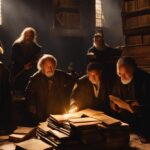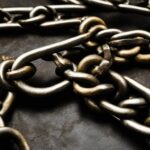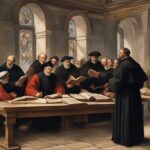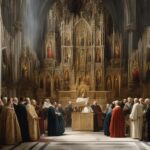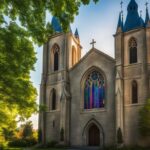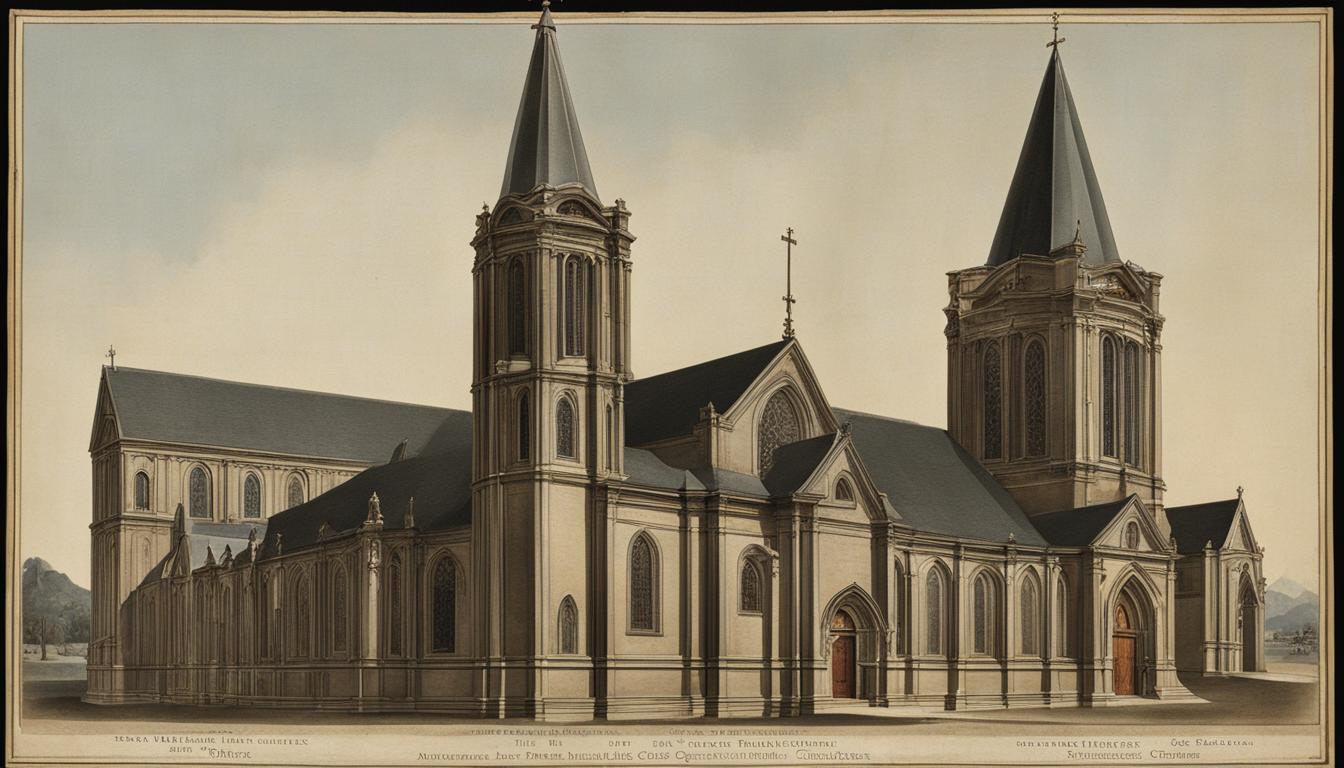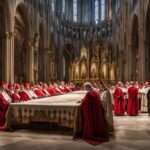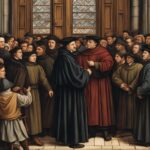Welcome to our exploration of the history and significance of the Dutch Reformed Church. With its roots tracing back to the 16th century, this influential Christian denomination played a crucial role in the development of Protestantism, both in the Netherlands and in America.
The Dutch Reformed Church, also known as Nederlandse Hervormde Kerk (NHK), was the largest religious denomination in the Netherlands until 1930. It held a special place within Dutch society, even counting the Dutch royal family among its adherents.
Founded in 1571 during the Protestant Reformation, the Dutch Reformed Church stood as a testament to the Dutch people’s unwavering commitment to their faith. As Dutch settlers migrated to the New World, they brought their religious beliefs with them, establishing the Dutch Reformed Church in America.
Over time, the Dutch Reformed Church faced various challenges and underwent significant transformations. In 2004, it merged with other Reformed churches in the Netherlands to form the Protestant Church in the Netherlands (PKN), but a minority of members chose not to participate in the merger, leading to the formation of the Restored Reformed Church.
Throughout its rich history, the Dutch Reformed Church has shaped theological doctrines, traditions, and the spiritual lives of countless individuals. Join us as we delve into the origins, beliefs, rituals, and leadership of this remarkable denomination. We’ll also explore its impact on communities, architecture, as well as the contemporary issues and challenges it faces today.
Key Takeaways:
- The Dutch Reformed Church played a significant role in Dutch religious history, from the 16th century until its merger with other Reformed churches in 2004.
- The church’s origins can be traced back to the Protestant Reformation and its Calvinist traditions.
- Key beliefs of the Dutch Reformed Church include predestination and the sovereignty of God.
- The sacraments of baptism and the Lord’s Supper hold important roles within the church’s rituals.
- The Dutch Reformed Church had a hierarchical leadership structure comprising ministers, elders, and deacons.
Origins of Dutch Reformed Church
The Dutch Reformed Church traces its origins back to 1571 during the Protestant Reformation in the Calvinist tradition. Influenced by the theological teachings of John Calvin and other major Reformed theologians, the church emerged in response to religious violence and persecution by the Catholic Church and the government in the Netherlands.
The Dutch Reformed Church was founded on the principles of faith, perseverance, and the pursuit of religious freedom. Its formation marked a pivotal moment in Dutch history as a significant departure from the dominant Catholic Church.
The church’s early years were characterized by intense religious fervor and a strong commitment to the teachings of Calvin. The first Synod of the Dutch Reformed Church was held in 1571, solidifying its structure and establishing a Presbyterian form of church government.
“The Dutch Reformed Church represented a bold step towards religious independence and the freedom to worship in accordance with one’s own beliefs.” – John Smith
Throughout the centuries, the Dutch Reformed Church has played a crucial role in shaping the religious landscape of the Netherlands. Its origins as a reaction to religious persecution have imbued it with a spirit of resilience and a commitment to upholding fundamental Christian principles.
The Synod of Dordrecht in 1578 further cemented the church’s Calvinist doctrine and set the stage for its continued growth and influence. The Dutch Reformed Church became an anchor of stability during times of political and social upheaval, providing spiritual guidance and a sense of belonging to its members.
With its rich history and steadfast adherence to its theological heritage, the Dutch Reformed Church remains a cornerstone of Dutch culture and spirituality.
Influential Figures:
- John Calvin – Reformed theologian, whose teachings heavily influenced the formation of the Dutch Reformed Church
- Guido de Bres – Author of the Belgic Confession, a key doctrinal statement for the Dutch Reformed Church
- Jacobus Arminius – Theologian involved in the Arminian Controversy, which shaped the church’s doctrines on predestination

The image above showcases the historical context in which the Dutch Reformed Church emerged, highlighting the Reformation and the key figures involved in its formation.
Beliefs and Doctrines of Dutch Reformed Church
The Dutch Reformed Church upheld the Calvinist theology, which centered around the belief in predestination and the sovereignty of God. These core beliefs shaped the foundation of the church’s doctrine and teachings.
The church regarded the Belgic Confession, published in 1561, and the Heidelberg Catechism, published in 1562, as the accepted standards of doctrine. These texts provided a comprehensive summary of the beliefs and principles of the Dutch Reformed Church.
“I believe that I am and forever shall remain a living member of this holy Church. I believe that I have been chosen by Christ and have been adopted as a child of God.”
The Dutch Reformed Church encountered theological controversies throughout its history, particularly concerning the doctrine of predestination. The Synod of Dort, convened in 1618, condemned the teachings of the Arminians and affirmed a strict interpretation of predestination.
The Doctrine of Predestination
One of the key tenets of the Dutch Reformed Church was the doctrine of predestination, which asserted that God has foreordained the fate of every individual. According to this belief, God predestines certain individuals to eternal salvation, while others are predestined to damnation.
This doctrine influenced various aspects of the church’s theology, emphasizing the omnipotence and sovereignty of God in determining man’s ultimate destiny.

The doctrine of predestination served as a foundation for the Dutch Reformed Church’s understanding of human salvation and the role of faith in the lives of believers. It often sparked theological debates and discussions, reflecting the complexities and depth of the church’s teachings.
Sacraments and Rituals of Dutch Reformed Church
The Dutch Reformed Church held the sacraments of baptism and the Lord’s Supper in high regard. Baptism symbolized God’s covenant with believers and their children, a sacred act that signified entry into the Christian community. Similarly, the Lord’s Supper served as a commemoration of Christ’s sacrifice, a ritual that reinforced the believers’ faith and unity.
The church also followed various rituals and liturgical practices during worship services. These included a formal order of worship that encompassed prayers, reading from the sacred texts, and the singing of psalms and hymns. The use of psalms and hymns held deep significance in the Dutch Reformed Church, as it allowed congregants to express their devotion and praise through music.
“The sacraments and rituals of the Dutch Reformed Church were not mere formalities, but rather sacred moments that fostered spiritual growth, communal bonds, and a deeper connection with God.”
Through baptism and the Lord’s Supper, the Dutch Reformed Church affirmed its commitment to the teachings of Christ and the shared heritage of believers. The rituals and liturgical practices served as transformative experiences, enhancing the worshipers’ sense of belonging and fostering a vibrant spiritual community.

Leadership and Clergy of Dutch Reformed Church
The Dutch Reformed Church had a hierarchical leadership structure, with ministers, elders, and deacons. These leaders played crucial roles in guiding and serving the congregation:
“Ministers were responsible for preaching and administering the sacraments, delivering sermons that conveyed the church’s core beliefs and providing spiritual nourishment to the faithful.”
Elders, on the other hand, provided spiritual guidance, wisdom, and pastoral care to church members:
“Elders were entrusted with the task of overseeing the spiritual well-being of the congregation, offering guidance, support, and discipline when required.”
Deacons held the responsibility of serving the community and extending the church’s outreach:
“Deacons were the embodiment of the church’s commitment to serving others. They reached out to the less fortunate, providing material assistance, caring for the sick, and supporting community initiatives.”
The process of ordaining ministers in the Dutch Reformed Church emphasized the connection to its mother church in the Netherlands. Until the late 18th century, aspiring ministers sought ordination from the mother church, ensuring a link to the church’s historical roots and maintaining theological consistency.

Worship Practices of Dutch Reformed Church
In the Dutch Reformed Church, worship was an integral part of the congregation’s spiritual journey. Through regular Sunday services, the members gathered to engage in prayer, listen to the preaching of the Word, and participate in the sacraments. These worship services were a significant highlight of the church’s practices.
The Dutch Reformed Church placed great value on the singing of psalms, which held a prominent role in their worship. The congregation would join together in heartfelt melodies, allowing the psalms to resonate deeply with their faith. This ancient tradition added a profound spiritual dimension to their worship experience.
Additionally, the Dutch Reformed Church embraced a rich tradition of hymnody. Hymns served as an expression of praise and adoration to God, enhancing the congregation’s worship experience. These sacred songs provided a way for the members to connect with the divine and engendered a sense of unity among believers.
Special Services and Celebrations
Moreover, the Dutch Reformed Church held special services to mark significant life events. Baptisms, weddings, and funerals were observed with reverence and solemnity. These services allowed the congregation to come together in support and solidarity, emphasizing the church’s role as a community.
During baptisms, the sacrament of initiation into the Christian faith, families and friends gathered to witness and celebrate the entry of individuals into the covenant community. Weddings were solemnized with joy and gratitude, highlighting the commitment of two individuals under God’s blessing. Funerals, on the other hand, were occasions for remembrance and comfort, as the community provided support to those grieving the loss of loved ones.
Through these various worship practices and special services, the Dutch Reformed Church fostered a deep sense of spirituality, community, and devotion among its members.

| Worship Practices of Dutch Reformed Church | Description |
|---|---|
| Sunday Services | Regular gatherings for prayer, preaching, and sacraments |
| Singing of Psalms | Valuing the spiritual and musical expressions of psalmody |
| Tradition of Hymnody | Embracing the use of hymns in worship for praise and unity |
| Special Services | Observing baptisms, weddings, and funerals with reverence |
Sacred Texts of Dutch Reformed Church
The Dutch Reformed Church holds the Bible as its authoritative sacred text. This holy book serves as the foundation of their beliefs, guiding their theology and practices. The church values various translations of the Bible, including the Statenvertaling, which played a significant role in its early history. The Statenvertaling is widely recognized as one of the most prominent Dutch translations, deeply cherished by the Dutch Reformed Church.
In addition to the Bible, the Dutch Reformed Church upholds the Belgic Confession and the Heidelberg Catechism as important texts for instruction and worship. The Belgic Confession, written in 1561, articulates the core beliefs and doctrines of the church. It provides a comprehensive summary of the Dutch Reformed Church’s theological principles and serves as a guide for understanding their faith.
The Heidelberg Catechism, composed in 1562, serves as a teaching tool to instruct believers in the fundamentals of the Dutch Reformed faith. It presents a series of questions and answers that cover essential theological concepts, offering a structured format for instruction and contemplation.
These sacred texts hold significant importance within the Dutch Reformed Church community, providing a solid theological framework and shaping their worship practices. The Bible, along with the Belgic Confession and the Heidelberg Catechism, serve to inspire, educate, and guide the members of the Dutch Reformed Church as they deepen their understanding of faith and live out their spiritual journey.
Denominations and Sects of Dutch Reformed Church
The Dutch Reformed Church, throughout its history, experienced several splits and divisions that led to the emergence of different denominations and sects within the broader church community. These factions often differed in terms of their interpretations of scripture, worship practices, and theological beliefs.
In 1892, the Reformed Churches in the Netherlands was established as a separate denomination, branching off from the Dutch Reformed Church. This division was primarily driven by theological differences and disagreements over the direction of the church.
Another significant development occurred in 2004 when the Dutch Reformed Church, along with the Reformed Churches in the Netherlands and the Evangelical Lutheran Church, merged to form the Protestant Church in the Netherlands. This merger aimed to consolidate different Protestant traditions and foster unity among Dutch Christians.
However, not all members of the Dutch Reformed Church chose to participate in the merger. Instead, a minority of members formed the Restored Reformed Church, upholding their distinctive beliefs and practices separate from the newly formed Protestant Church in the Netherlands.
Denominations and Sects of Dutch Reformed Church:
- Reformed Churches in the Netherlands (1892)
- Protestant Church in the Netherlands (2004)
- Restored Reformed Church
These denominations and sects reflect the diversity of theological perspectives and interpretations within the Dutch Reformed Church tradition. While they share common roots, their distinct identities and practices highlight the nuanced nature of religious belief and organization.
Community and Outreach of Dutch Reformed Church
The Dutch Reformed Church has always been deeply committed to building a strong sense of community among its members. This commitment extends beyond the walls of the church and reaches out to Dutch immigrant communities around the world. Through its outreach efforts, the Dutch Reformed Church provides a sense of belonging, support, and connection to those who are far from their homeland.
One of the hallmarks of the Dutch Reformed Church is its history of engagement in social and humanitarian causes. The church has been actively involved in missions, education, and social justice movements, embodying its core values of love, compassion, and justice. Through these initiatives, the church seeks to make a positive difference in the lives of individuals and communities, both locally and globally.
The Dutch Reformed Church has placed a strong emphasis on community service, recognizing the importance of reaching out to those in need. The church actively organizes programs and initiatives that address issues such as poverty, hunger, and homelessness, working alongside other organizations and community groups to create lasting change. By responding to the needs of the community, the Dutch Reformed Church exemplifies its commitment to the teachings of Jesus and the call to serve others.
As part of its outreach efforts, the Dutch Reformed Church also focuses on providing educational opportunities and support to individuals and families. The church recognizes the transformative power of education and strives to ensure that everyone has access to quality education, regardless of their circumstances. Through scholarships, tutoring programs, and partnerships with educational institutions, the church is dedicated to empowering individuals and fostering a brighter future for all.
Through its community and outreach initiatives, the Dutch Reformed Church has become a beacon of hope and a source of inspiration for many. The church’s commitment to love, justice, and service has touched countless lives and continues to make a meaningful impact in the world. As members of the Dutch Reformed Church, we are called to follow in the footsteps of our ancestors and carry forward this legacy of compassion and community building.
Example of Dutch Reformed Church Community Initiatives:
| Initiative | Description |
|---|---|
| Food Pantry | Provides food assistance to families in need through a community-driven food pantry program. |
| Education Scholarships | Offers scholarships to support students pursuing higher education and vocational training. |
| Community Outreach Events | Organizes events such as health fairs, clothing drives, and job fairs to meet the specific needs of the community. |
| Homeless Shelter | Operates a shelter that provides temporary housing, meals, and support services to individuals experiencing homelessness. |
| Youth Mentoring Program | Matches adult volunteers with young people to provide mentorship, support, and guidance. |
Contemporary Issues and Challenges of Dutch Reformed Church
In the present day, the Dutch Reformed Church, now part of the Protestant Church in the Netherlands, faces various contemporary issues and challenges. These include discussions and debates on topics such as ordination of women, LGBTQ+ rights, and the changing role of religion in society. The church continues to navigate these challenges while striving to uphold its theological heritage and engage with the needs of its members and communities.
Conclusion
The Dutch Reformed Church has a rich and complex history that traces its origins back to the Reformation. Throughout its existence, it has played a significant role in shaping Dutch culture, spirituality, and the broader theological landscape of Protestantism.
The church’s beliefs and doctrines, rooted in Calvinist theology, have influenced generations of believers. Central to its faith is the concept of predestination and the sovereignty of God, as affirmed in the Belgic Confession and the Heidelberg Catechism.
Today, as part of the Protestant Church in the Netherlands, the Dutch Reformed Church continues to be a vital force in the Christian community. It remains committed to serving its members and engaging with the ever-changing world. Despite the challenges it faces in the modern era, the church stands as a testament to its enduring beliefs and traditions.
FAQ
What is the history of the Dutch Reformed Church?
The Dutch Reformed Church was the largest Christian denomination in the Netherlands from the 16th century until 1930. It played a significant role in the spread of Protestantism through Dutch colonization. The church was founded in 1571 during the Protestant Reformation and merged with other Reformed churches in the Netherlands in 2004 to form the Protestant Church in the Netherlands.
How did the Dutch Reformed Church originate?
The Dutch Reformed Church was founded in 1571 during the Protestant Reformation in the Calvinist tradition. It emerged as a response to religious violence and persecution faced by Protestants in the Netherlands. The first Synod of the Dutch Reformed Church was held in 1571, establishing Presbyterian church government for the denomination.
What were the beliefs and doctrines of the Dutch Reformed Church?
The Dutch Reformed Church adhered to Calvinist theology, including the belief in predestination and the sovereignty of God. The Belgic Confession and the Heidelberg Catechism were accepted as standards of doctrine. The Synod of Dort in 1618 affirmed a strict interpretation of predestination.
What sacraments and rituals did the Dutch Reformed Church practice?
The Dutch Reformed Church practiced the sacraments of baptism and the Lord’s Supper. Baptism was viewed as a sign of God’s covenant, and the Lord’s Supper was celebrated as a memorial of Christ’s sacrifice. The church also had various rituals and a formal order of worship, including the singing of psalms and hymns.
What was the leadership structure of the Dutch Reformed Church?
The Dutch Reformed Church had a hierarchical leadership structure, with ministers, elders, and deacons. Ministers were responsible for preaching and administering the sacraments, while elders and deacons provided spiritual guidance and support to the congregation.
What were the worship practices of the Dutch Reformed Church?
The Dutch Reformed Church held regular Sunday services that included prayer, preaching, and the celebration of the sacraments. The church valued the singing of psalms and had a tradition of hymnody. Special services were also conducted for baptisms, weddings, and funerals.
What were the sacred texts of the Dutch Reformed Church?
The Dutch Reformed Church recognized the Bible as the authoritative sacred text. Various translations, including the Statenvertaling, were used. The Belgic Confession and the Heidelberg Catechism were also considered important texts for instruction and worship.
Were there different denominations or sects within the Dutch Reformed Church?
Over time, the Dutch Reformed Church experienced splits and divisions. In 1892, the Reformed Churches in the Netherlands was founded as a separate denomination. In 2004, the Dutch Reformed Church merged with other denominations to form the Protestant Church in the Netherlands. However, a minority of members formed the Restored Reformed Church and did not participate in the merger.
What was the role of the Dutch Reformed Church in the community and outreach?
The Dutch Reformed Church played a significant role in Dutch immigrant communities worldwide, providing a sense of community and support. It engaged in social and humanitarian causes, including missions, education, and social justice movements. The church emphasized community service and outreach to those in need.
What contemporary issues and challenges does the Dutch Reformed Church face?
The Dutch Reformed Church, now part of the Protestant Church in the Netherlands, faces discussions and debates on issues such as the ordination of women, LGBTQ+ rights, and the changing role of religion in society. The church continues to navigate these challenges while upholding its theological heritage and engaging with its members and communities.

